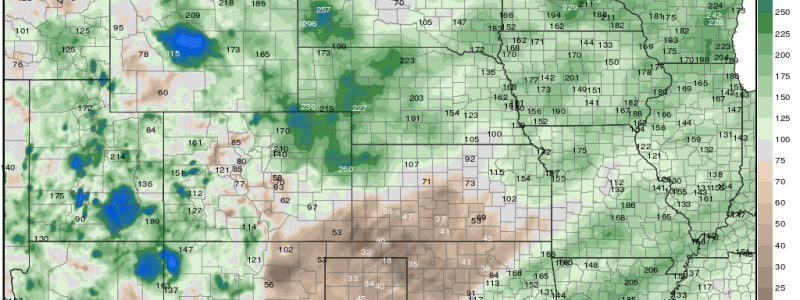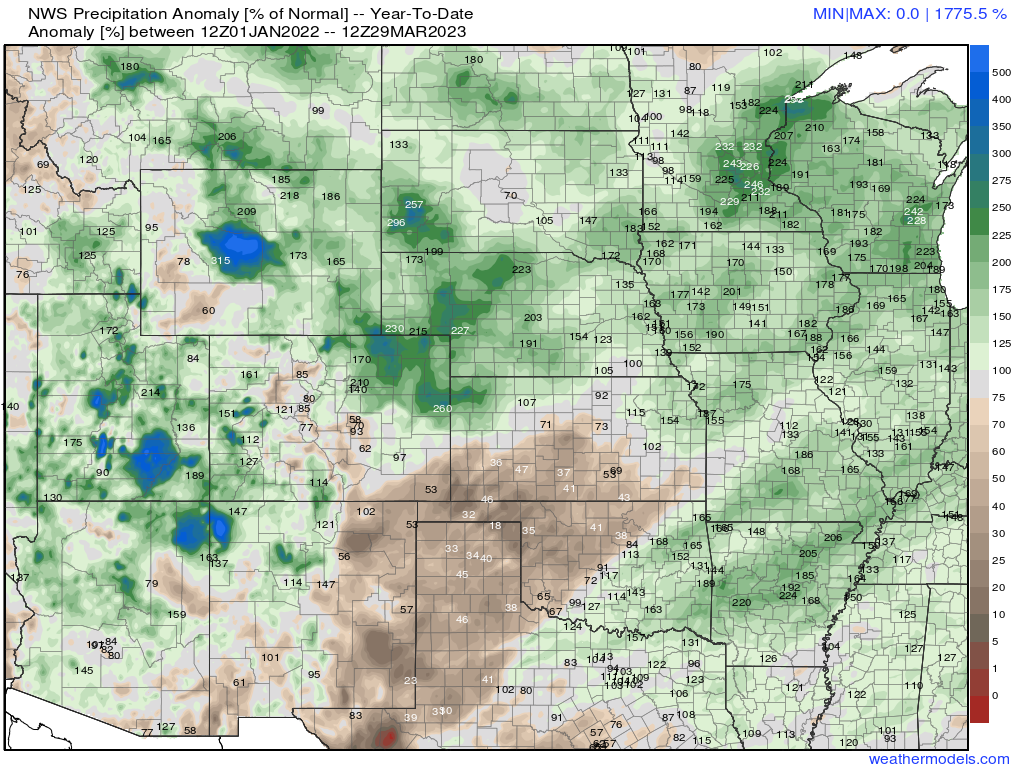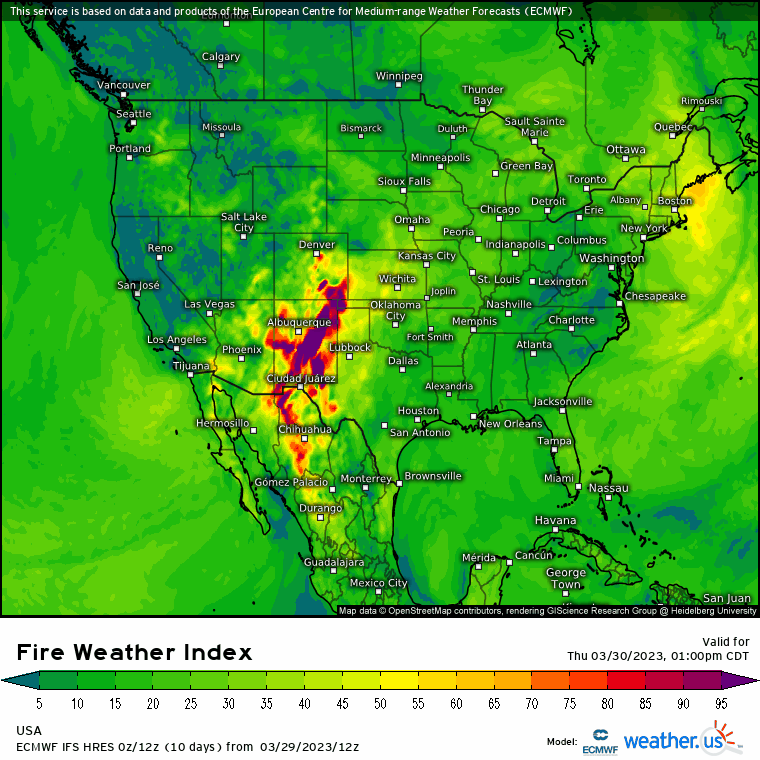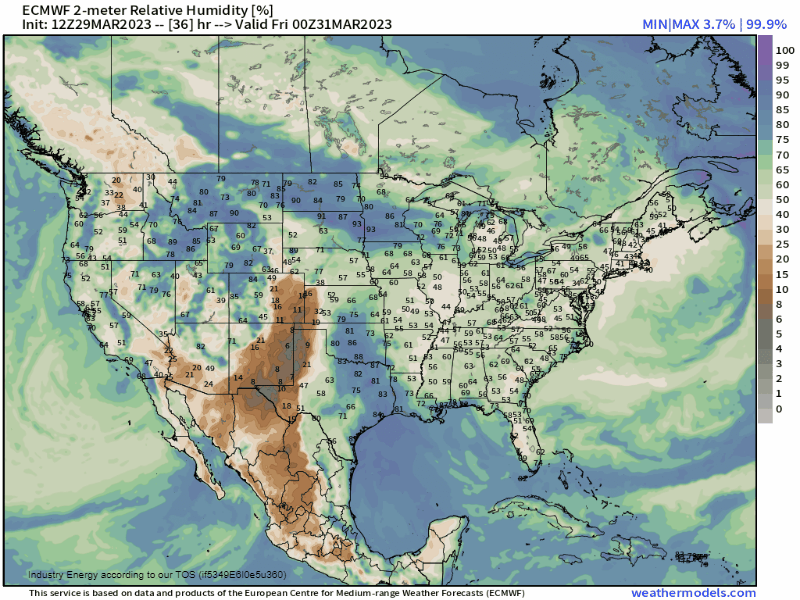
The Dry Side Of The System
The latter half of the week is shaping up to be highly impactful for much of the country east of the Rockies, and for more than one reason.
The first, as discussed in Monday’s blog, is a severe weather threat covering quite a large area on Friday. Check back tomorrow for a detailed update on what to expect as the hi-res models come into range.
The second is a heavy snow threat for the Northern Plains and Great Lakes regions in the cold sector of the same system driving the severe weather threat further south.
And lastly, multiple days of a critical risk in terms of fire weather for the southern High Plains. It’s this threat that today’s blog will focus on.

A substantial drought has been building in the Southern/Central Plains regions since roughly the the start of 2022.
While drought had been present in some form or another for parts of this region beforehand, it really started to dig in over the last year or so. As of the latest drought monitor analysis, pockets of extreme and exceptional drought remain deeply rooted from southern Texas to southern Nebraska.
As we can see from the map above that displays the year-to-date precipitation anomaly (in percent of normal), the aforementioned region has continued to record well below average precipitation since the start of 2023. Fuels (grasses, vegetation, etc) are dry and burn easily under the right conditions.

Unfortunately, those conditions are forecast to materialize over the next three days.
As our next system winds up and deepens, pressure gradient winds will increase. Widespread gusts of 50+ mph will be likely both ahead of and behind the cold front.

As winds descend the Rocky Mountains (especially on Friday), they will warm and dry, resulting in very low relative humidity for the region.
For those keeping track, we now have:
- Dry fuels/antecedent drought conditions
- Gusty winds
- Downsloping winds resulting in very dry air
Any fires that start while these conditions are present will have the potential to spread quickly and potentially become out of control.
Take Action:
- Use extreme caution over the next few days in this region. Avoid any outdoor activities that may start a fire (grilling, bonfire, etc).
- Don’t burn trash or yard debris during this period.
- Keep a “go bag” ready in your car if a fire does develop near your home. As mentioned, fire can spread quickly under these conditions. You may not have much time to gather supplies if an evacuation is ordered.











